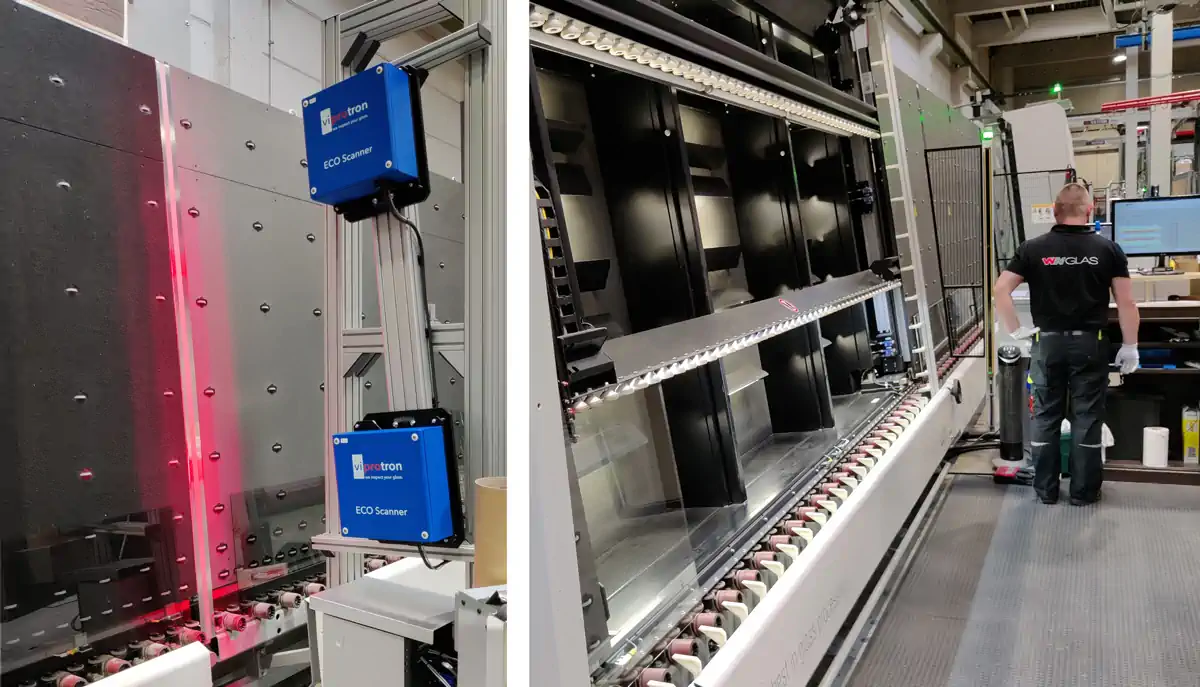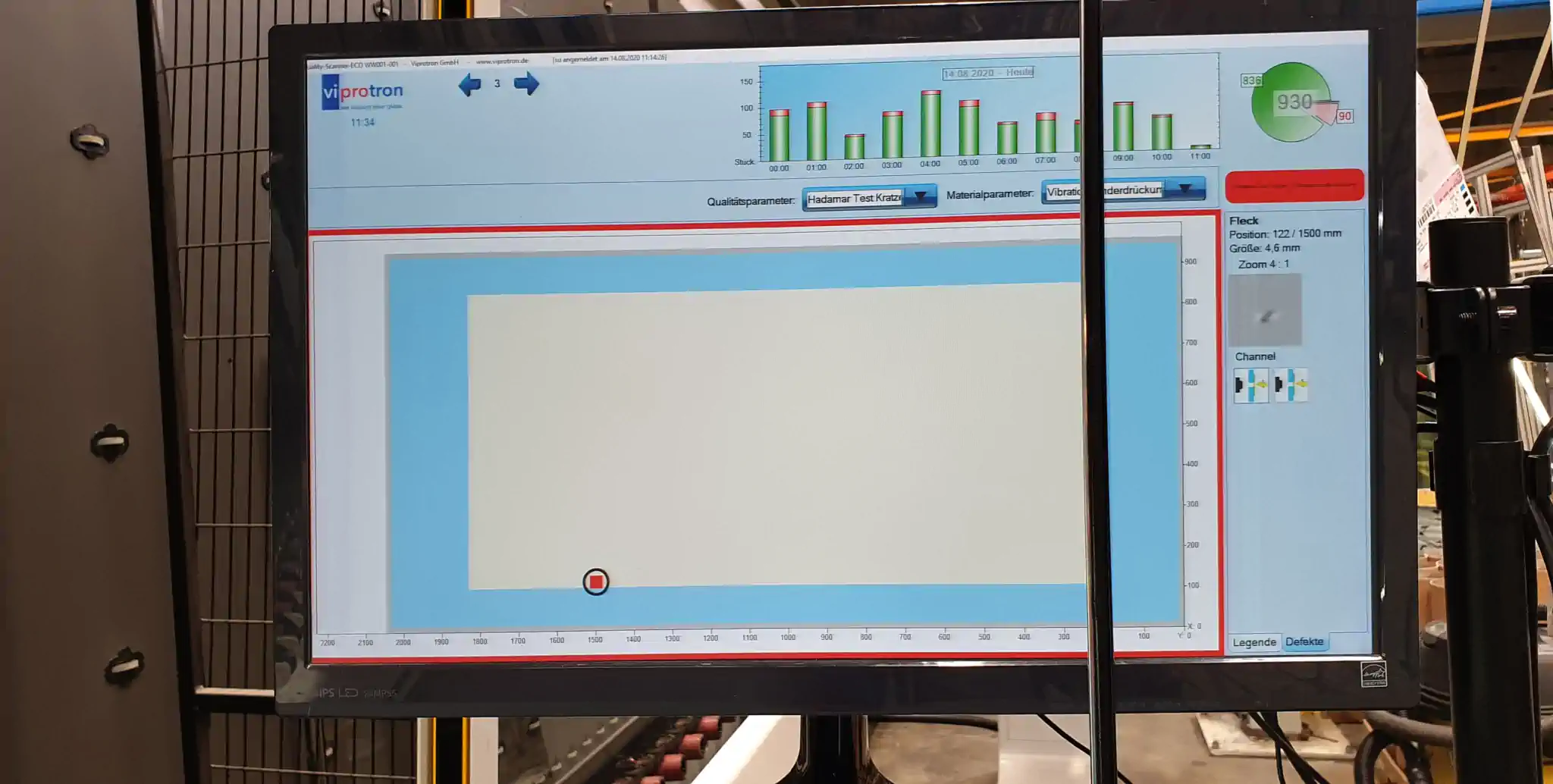Improvement means change
Revolutionize how you work with the eco scanner.
Motivation
High-quality products require an appropriate level of inspection. Unfortunately, the human eye is limited in its repeatability and reliability over time, making an automated scanner system the primary choice for this application. Together with Viprotron, Glaszentrum Weber und Wagener / Germany has taken an important step towards improving quality assurance. For over 20 years, the company has focused on its core business of glass. The partnership between machine suppliers and staff results in products of the highest quality, which have been reliably inspected by our ECO Scanner since summer 2020.
Installation and commissioning of the scanner
The ECO Scanner can be implemented without complex modifications to the existing equipment. Due to a simplified integration, utilizing a reflective adhesive strip in combination with our camera system, installations can be carried out with limited interruptions in production.
The scanner was commissioned by Viprotron and the Weber and Wagener personnel. Some of the necessary components such as monitor, keyboard, and mouse were provided by the customer and seamlessly integrated into the equipment supplied by Viprotron. After commissioning, the operators and quality team received specific training to their applicable demands. Due to the intuitive interface and simplified design, the team felt confidence in the use of the system in a very short period of time.
Software and display
The results of the inspected pane are displayed on the monitor at the inspection station. The display is highly intuitive and graphical: defect-free glass panes are shown with a green border, defective glass panes with a red one. The primary defects are also graphically represented utilizing colors: red stands for out-of-specification defects and blue stands for “allowed defects”.
The defect types are also shown graphically based on specific icons: Bubbles and inclusions with a dot, surface defects with a rectangle, and scratches with a line reflecting the location and direction of the scratch. By utilizing graphical representations relative to position, defects on the glass can be quickly identified and mitigated.
The underlying logic for the defect detection is based on a dynamic recipe that can be easily adapted according to the customer requirements relative to local standards (e.g. in Europe (EN 1279 I), USA (ASTM C1036) or Japan (JIS R3209)). By offering this flexibility to the quality managers or administrators, Viprotron provides the customer with a high degree of autonomy to manage their process.
Conclusion
After working with the ECO Scanner system from Viprotron, Weber and Wagener can confirm:
The system was simple to integrate, and no complex modifications were required prior to the system arriving
The user interface is extremely intuitive thanks to the graphical representation of the results
The ECO Scanner is very easy to use and maintain
The quality levels are both repeatable and reliable
Weber und Wagener Glas is currently considering another ECO Scanner for production.



